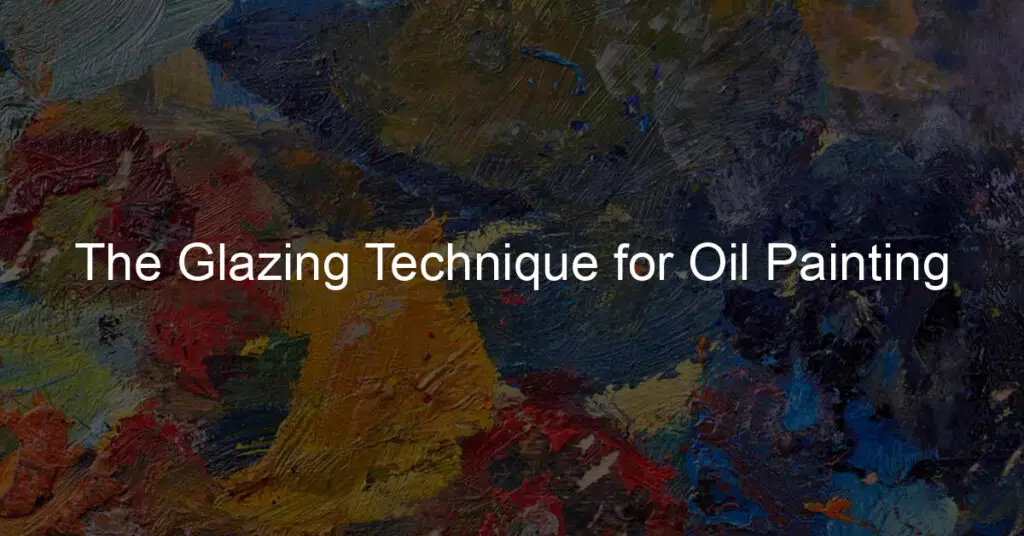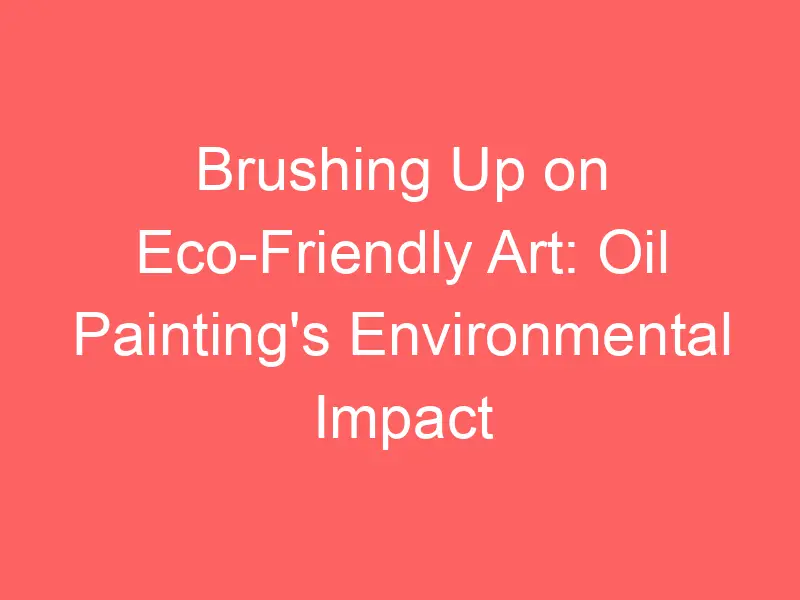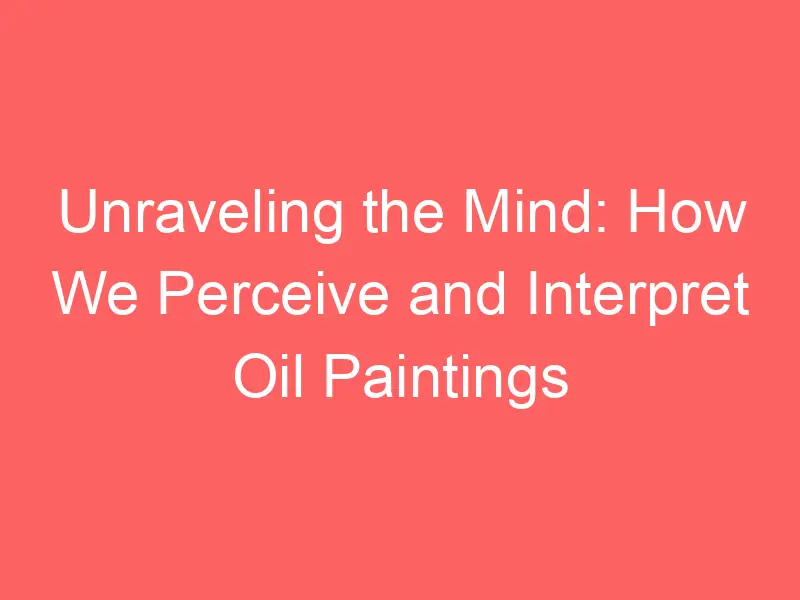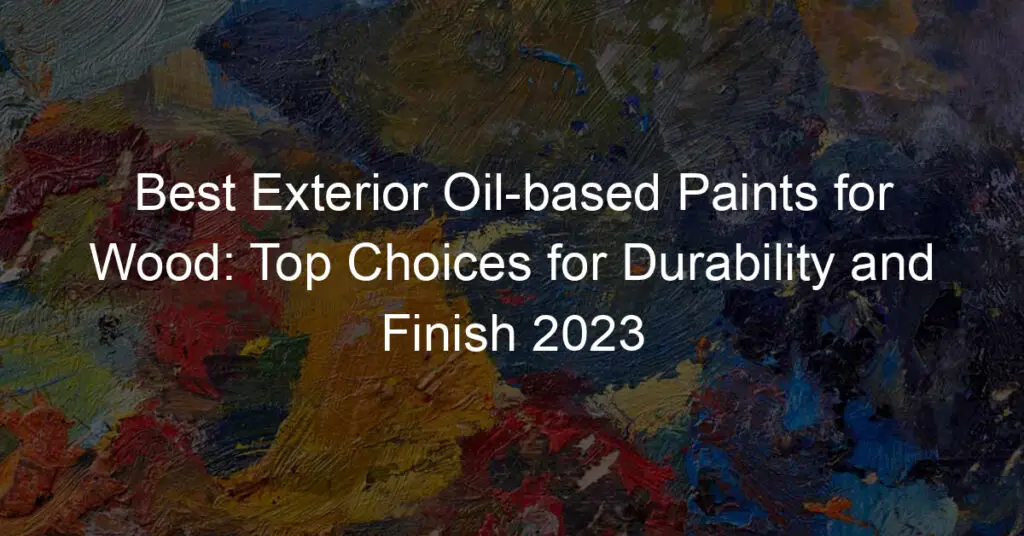Introduction to Oil Painting Glazing Technique
Hey there, art enthusiasts! Today, we’re going to dive into the fascinating world of oil painting, specifically focusing on the glazing technique. So, grab your brushes and let’s get started!
- Definition of Oil painting glazing technique
- History and evolution of Glazing method in oil painting
- Importance of mastering Oil painting techniques
Stay tuned as we delve deeper into the basics of glazing, provide a step-by-step tutorial, and showcase some successful uses of glazing in art. Happy painting!
Understanding the Basics of Glazing in Art
Hey there, art enthusiasts! Today, we’re going to dive into the world of glazing in art, specifically focusing on oil paint glazing. Glazing is a cool technique that can give your artwork depth and luminosity. So, let’s get started!
Components of Oil Paint Glazing
There are three main components to consider when glazing with oil paints. Let’s break them down:
- Understanding the role of a medium in glazing
- Choosing the right color for glazing
- Importance of layering in glazing
So there you have it, the basics of glazing in art. With these components in mind, you’re well on your way to creating some stunning oil paintings. Happy painting!
Artistic Glazing Techniques
Let’s dive into some of the most popular glazing techniques that artists use to create their masterpieces. Each technique has its unique charm and effect, so don’t be afraid to experiment and find the one that suits your style best!
- Wet-on-wet techniqueAlso known as ‘alla prima’, the wet-on-wet technique involves applying fresh (wet) paint onto a layer of wet paint. This method allows the colors to blend directly on the canvas, creating a smooth transition between shades. It’s a great technique for creating soft edges and subtle color gradations. Famous artists like Bob Ross and William Turner were known for their use of this technique.
- Wet-on-dry techniqueOn the other hand, the wet-on-dry technique is about applying wet paint onto a completely dry layer of paint. This technique allows for more control over the details and produces sharper edges than the wet-on-wet method. It’s perfect for defining shapes and adding intricate details to your artwork. The legendary Leonardo da Vinci often used this technique in his works.
- Scumbling techniqueLast but not least, we have the scumbling technique. This involves applying a thin, semi-transparent layer of light-colored paint over a dried darker layer. The result is a beautiful, luminous effect that adds depth and complexity to the artwork. Artists like Rembrandt and Vermeer were known for their use of scumbling to bring their paintings to life.
Remember, there’s no right or wrong way to use these techniques. The best way to learn is by trying them out for yourself. So grab your brushes and start experimenting!
Glazing Oil Paint Tutorial
Hey there, budding artists! Ready to take your oil painting skills to the next level? Today, we’re going to learn about glazing. It’s a cool technique that can make your artwork look even more amazing. So, let’s dive right in!
Step-by-Step Guide on How to Glaze Oil Paints
Glazing might sound a bit fancy, but it’s actually pretty simple. Here’s a step-by-step guide to help you out:
- Preparing the Canvas
- Applying the Base Layer
- Adding the Glaze
- Final Touches and Drying
And there you have it! A simple guide to glazing oil paints. Remember, practice makes perfect. So, don’t get discouraged if your first few attempts don’t turn out exactly how you want. Keep trying, and you’ll get the hang of it in no time.
Happy painting!
Mastering the Glazing Process in Oil Painting
As you continue to explore the world of oil painting, you’ll come across the glazing process. This technique can add depth and luminosity to your artwork, but it’s not without its challenges. Let’s dive into some common mistakes artists make when using the glazing method in oil painting.
Common Mistakes in Oil Painting Glazing Method
While glazing can bring your oil paintings to life, it’s easy to stumble along the way. Here are some pitfalls to avoid:
- Using too much medium: It’s easy to get carried away with the medium, but using too much can make your painting look glossy or even cause it to crack. Remember, a little goes a long way!
- Not allowing enough drying time: Patience is key in oil painting. Each layer of glaze needs time to dry before you add the next. If you rush the process, you may end up with a muddy mess.
- Overmixing colors: When glazing, it’s best to keep your colors simple. Overmixing can lead to dull, muddy colors. Stick to a limited palette and let the layers of glaze do the work.
By avoiding these common mistakes, you’ll be well on your way to mastering the glazing process in oil painting. Remember, practice makes perfect, so don’t be discouraged if your first few attempts don’t turn out as planned. Keep trying, and you’ll soon see improvement.
Transparent Paint
Transparent paint is a type of oil paint that allows light to pass through it, creating a luminous effect on the canvas. These paints are commonly used in the glazing technique for oil painting to build up layers and create depth. Transparent pigments are available in various colors and give artists the ability to create subtle color transitions and optical mixing.
Some popular transparent pigments include Yellow Lake and Ultramarine Blue. These colors excel at providing glazes without altering the underlying layers of paint.
Opaque Paint
Opaque paint, in contrast, does not allow light to pass through it and is often used to provide solid, rich color on a canvas.
These paints are ideal for creating solid base colors or when layering is not required. Opaque paints can also be mixed with other paints for a more diverse range of colors and effects. Opaque pigments offer better coverage than transparent pigments, making it easier to achieve the desired color intensity with fewer layers.
Translucent Paint
Translucent paint is a third option for oil painters, offering a compromise between transparent and opaque paints. This type of paint allows for some light to pass through it, creating a more subtle effect than transparent pigments while still adding depth and dimension to a piece.
Translucent paint is often used in conjunction with other paint types to achieve a desired level of transparency and can be mixed with varying amounts of mediums to alter the paint’s transparency and luminosity. With translucent paint, artists can bridge the gap between transparent and opaque paint while achieving the desired effect in their work.
Glazing Techniques and Styles
Layers of Glazing
In the glazing technique, layers of glazes are used to build up a painting. These layers are thin, transparent, and consist of oil mixed with a small amount of paint.
The underpainting provides a base for the glazes – it’s usually monochromatic and helps establish values, shading, and composition. With each layer, artists can alter and enhance the colors and hues, creating depth and luminosity in the artwork.
Alla Prima
Alla Prima is a quicker approach to oil painting in which artists complete their work in a single session without waiting for layers to dry.
Although it doesn’t rely on building glazes, some painters incorporate glazing to increase richness and depth. They often pre-mix a range of hues and apply glazes strategically while the underlying layers are still wet, making it possible to blend colors seamlessly.
Old Master
The Old Master style is a traditional method where artists create multiple layers of glazes to achieve a high level of detail and depth in their work. This method harkens back to the techniques used by renowned artists such as Rembrandt and Vermeer.
It requires patience and control, as artists must allow each layer to dry thoroughly before adding another glaze. The resulting work has a refined, glowing quality that can’t be achieved through other methods.
Grisaille
Grisaille is a technique where the underpainting is completed in shades of gray – the word “grisaille” stems from the French word for gray, “gris.” This monochromatic base allows artists to easily see values and form, providing a foundation for later glazing.
When transparent color glazes are applied over the grisaille, the resulting luminosity and depth bring the painting to life.
Vacant Shadows Technique
The Vacant Shadows Technique emphasizes preserving the shadows from the underpainting and allowing them to shine through the subsequent glazes.
It involves selectively applying glazes to the mid-tones and highlights while avoiding the shadows. This creates a contrast between the vibrant, colorful mid-tones and highlights, and the untouched shadows, resulting in a striking visual effect.
Glazing Mediums and Materials
The process of glazing in oil painting involves applying a thin, transparent layer of paint over a dried, opaque layer. The glazing technique enhances the depth of color, fine details, and overall luminosity.
To implement this technique, you will need to use a glazing medium to mix with the paint. Below are essential glazing mediums and materials for oil painting.
Linseed Oil
Linseed oil is a yellowish oil derived from flax seeds. It is widely used as a carrier in oil paints and the essential ingredient in most oil painting mediums, like a glazing medium. The properties of linseed oil facilitate a smooth consistency and better flow for the application.
- Refined linseed oil: Good for glazing due to its lower viscosity and faster drying time
- Stand oil: A processed form of linseed oil that is thicker and has a slower drying time than refined linseed oil.
Turpentine
Turpentine is a volatile solvent derived from the resin of certain pine trees. It is used to dilute oil-based paints, varnishes, and mediums. In glazing, turpentine can be mixed with linseed oil to create a fluid glazing medium.
- Pure gum turpentine: Natural and traditional choice that has a strong odor
- Odorless mineral spirits: A petroleum-based alternative that has a lower odor, making it ideal for artists with sensitivities to strong fumes
Varnish
Varnish is a clear, glossy protective finish used in oil painting to seal and protect the artwork. Adding varnish to the glazing medium can improve transparency, gloss, and depth of color. There are various types of varnishes to choose from:
- Damar varnish: A traditional varnish derived from a tree resin that is known for its brilliance and rapid drying
- Alkyd-based varnish: A synthetic varnish with good flexibility, durability, and shorter drying time compared to damar varnish
Solvents
A solvent is a substance used to dissolve or thin other substances, like oil paints. In glazing, a solvent can be added to the glazing medium to expedite the drying time and improve the flow. Common solvents include:
- Turpentine: Discussed earlier as a popular solvent for glazing
- Odorless mineral spirits: A more refined alternative with a less pungent odor
Using a combination of these mediums and materials ensures a successful glazing technique in oil painting. Remember to choose the best type of medium, oil, solvent, and varnish according to your specific requirements and work environment.
Tools and Accessories
Brushes
When it comes to the glazing technique for oil painting, choosing the right brushes is essential. Here are some common types of brushes for glazing:
- Soft bristle brushes: These brushes are perfect for applying thin layers of oil paint. They’re made from soft, natural hairs such as sable or synthetic fibers, offering smooth and even application.
- Filbert brushes: Filbert brushes have a rounded tip, which provides versatility in blending and creating soft edges. Filbert brushes can be either natural or synthetic bristles.
- Flat brushes: These brushes have a square-shaped head and are used for applying large areas of color or blending wider sections.
It’s important to have a variety of sizes and shapes to achieve desired effects when glazing.
Canvas
The choice of canvas is equally crucial for the glazing technique in oil painting. Here are some aspects to consider:
- Pre-primed canvas: Most store-bought canvases are pre-primed with gesso, which helps to create a barrier between the paint and canvas to prevent oil from deteriorating the fabric over time. A pre-primed canvas saves the artist time and ensures the proper priming.
- Stretched canvas: Choosing a well-stretched canvas will provide the ideal surface tension for glazing. Look for evenly stretched canvas with no sagging or wrinkling.
- Canvas texture: Different canvas textures will produce varied results in glazing. A smooth surface is easier to work with when applying thin layers of paint, while a rougher canvas texture adds interest and dimension to the artwork.
Experimenting with different types of brushes and canvases is a great way to find what suits your preferences and needs best for the glazing technique in oil painting. Be confident in your choices, and let your knowledge guide you in your artistic process. (Here are some of the best canvases for oil painting)
Preparing for Glazing
Planning the Composition
Before starting the glazing process, it’s essential to plan your composition carefully. This will help you determine the areas that need to be glazed and which colors to apply.
Consider your desired color scheme and the lighting of the scene, as these factors will drastically affect your approach to glazing. Making several preliminary sketches can help you visualize the final result.
Creating an Opaque Base
The next step in the glazing technique for oil painting is creating an opaque base. This base layer consists of a thicker application of paint that covers the canvas and sets the foundation for the glazed layers.
It is crucial to apply the paint with a large brush in an even tone, establishing a solid starting point for subsequent glazing. Avoid using overly thin layers of paint for this stage, as they might become transparent and disrupt the overall effect of the finished artwork.
Underpainting
Underpainting is an essential step in preparing for glazing, as it helps the artist establish the values, composition, and general color scheme of their work.
During the underpainting phase, focus on establishing your darks, lights, and mid-tones. Work in monochrome using various shades of gray or opt for a complementary color scheme that contrasts with your intended final color palette.
This approach will provide a strong basis for your glazed layers, allowing for more vibrancy and depth in the final painting.
Dried Layer
When the underpainting is completed, you must wait for the layer to dry fully before moving on to the glazing step. The drying time can vary depending on the thickness of the paint and the environmental conditions, such as humidity and temperature.
As a general rule of thumb, allow at least 24 hours for the underpainting to dry completely. It is essential to ensure that the dried layer is stable and robust, as it will serve as a foundation for applying glazes.
To test the dryness of the layer, gently press your finger on the surface; if no paint transfers onto your finger, your underpainting is ready for glazing.
Applying Glaze Layers
Transparent Layers
Glazing in oil painting involves applying thin layers of paint over an already-dried underpainting. This technique enhances the transparency and luminosity of the artwork.
When working with transparent layers, it’s essential to choose a transparent oil paint to allow the underpainting to show through clearly. Some examples of transparent oil paints include Indian Yellow, Alizarin Crimson, and Phthalo Blue.
When applying a transparent layer, make sure to:
- Use a soft brush to spread the glaze evenly over the surface gently.
- Allow the glaze to dry before adding another layer
- Keep the glaze layer thin to maintain the transparency
Translucent Layers
Translucent layers are a mix of transparent and opaque layers, offering less clarity than transparent layers but still allowing the underpainting to be visible. Translucent paints include Burnt Sienna and Yellow Ochre.
When applying a translucent layer, follow these tips:
- Ensure the underpainting is fully dried to avoid lifting the paint beneath
- Use a medium to dilute the paint, creating a semi-transparent mixture
- Gradually build up the layers to achieve the desired luminosity
Blending Layers
Blend your glazing layers to create smooth color transitions and harmonious composition. When it comes to blending, it’s important to remember:
- Use a clean, dry brush to blend the edges of each layer softly.
- Avoid over-blending, which can cause layers to lose their luminosity
- Allow each layer to dry before adding a new one to prevent interference among layers
Control and Effects of Glazing
Glazing is a prominent oil painting technique that provides a range of impressive results. Through this process, artists can control the opacity, create depth, enhance luminosity, and generate striking shadows and highlights.
Adjusting Opacity
In glazing, thin layers of transparent or semi-transparent paint are applied on top of an already-dried layer of paint. These layers can be controlled for opaqueness by adjusting the ratio of medium to pigment. Fast-drying mediums may be used to hasten this process, while slow-drying mediums provide subtler effects.
- Advantages: Greater control over opacity allows artists to create various degrees of transparency, enabling more depth and dimension in their work.
- Drawbacks: This technique requires patience, as multiple layers are built upon each other, and each layer must be dried before applying the next one.
Creating Depth
By using glazing techniques, artists can alter the dimension and value of their oil paintings. Landscapes, in particular, benefit from this process, as it enables a heightened sense of atmospheric depth and spaciousness.
Enhancing Luminosity
One of the unique outcomes of glazing is enhanced luminosity. The layers of transparent paint catch and reflect light, giving a glowing quality to the painting. This helps add richness to the chroma of the colors used and illuminates the overall artwork.
Creating Shadows and Highlights
Glazing allows artists to create more vivid and diverse shadows and highlights in their work. By applying multiple transparent paint layers, artists can subtly shift values and build up impressive tonal transitions.
- Advantages: The tonal transitions created through glazing produce a more lifelike, convincing result, adding a sense of depth and dimension to oil paintings.
- Drawbacks: As with adjusting opacity, this technique can be time-consuming due to the required drying time between layers.
Common Glaze Recipes and Combinations
Madder Lake and Verdigris
Madder Lake and Verdigris are two popular pigments used for creating glazes in oil painting. Madder Lake is a warm, transparent red pigment obtained from the madder plant, while Verdigris is a green pigment made from the corrosion of copper.
- Madder Lake glaze: Mix Madder Lake pigment with a clear glazing medium, such as linseed oil or stand oil. To ensure transparency, use a ratio of 1 part pigment to 4 parts medium.
- Verdigris glaze: Combine Verdigris pigment with a clear glazing medium, using a similar ratio as Madder Lake for transparency.
When layering these glazes, you can create a range of colors and depths:
- Warm green: Apply a thin layer of Madder Lake glaze over a dried Verdigris glaze.
- Cool green: Reverse the layers by applying a thin layer of Verdigris glaze over a dried Madder Lake glaze.
- Subtle variations: Adjust the number of glaze layers and the thickness of each layer to achieve desired color and depth.
Indigo and Zinc White
Indigo and Zinc White are two other pigments commonly used in glazing recipes. Indigo is a deep blue pigment derived from the indigo plant, while Zinc White is an opaque white pigment.
- Indigo glaze: Create an Indigo glaze by mixing Indigo pigment with a clear glazing medium, following the same ratio as Madder Lake and Verdigris for transparency.
- Zinc White Glaze: Zinc White should be used sparingly due to its opacity. Mix a small amount of Zinc White pigment with a clear glazing medium for a semi-transparent glaze.
Here are some combinations using Indigo and Zinc White glazes:
- Cool blue: Apply a thin layer of Zinc White glaze over a dried Indigo glaze. This will result in a lighter, cooler blue.
- Warm blue: Reverse the layers by applying a thin layer of Indigo glaze over a dried Zinc White glaze, creating a warmer blue tone.
- Grey tones: Experiment with various layering patterns and thicknesses to achieve different levels of transparency, resulting in nuanced grey tones.
These recipes and combinations provide a solid foundation for artists to explore the glazing technique in oil painting while achieving various visual effects and richness in their artwork.
Advanced Glazing Techniques
Fat Over Lean
When using the glazing technique in oil painting, it’s essential to follow the fat-over-lean rule. This means applying layers with more oil (fat) on top of layers with less oil (lean). Doing so ensures the upper layers dry slower, preventing cracks in the paint surface. Apart from oils, artists can use mediums like Liquin to modify the layers’ consistency and drying time.
- Start by applying thinner layers at the beginning of the painting process. These may have a higher percentage of solvents and less oil.
- Progressively increase the amount of oil or medium in each successive layer, ensuring the topmost layer has the highest oil concentration.
Impasto
Impasto is a painting technique characterized by thick, textured brushstrokes or palette knife applications. It creates a sense of depth and texture in the artwork, allowing light to interact with the paint layers differently. To achieve a successful impasto effect in glazing, follow these steps:
- Build up texture using thick oil paint or a medium that increases the paint body, such as Liquin Impasto.
- Allow the textured layer to dry thoroughly before applying subsequent glazes.
- Use transparent or semi-transparent glazes to modify the color and appearance of the textured layer without hiding its depth and texture.
Scumbling
Another advanced glazing technique is scumbling. It involves applying a thin, semi-opaque layer of paint over a dried layer to create subtle variations in color and texture. Scumbling is an excellent method for creating atmospheric effects, softening edges, and refining shapes. To scumble effectively:
- Choose a semi-opaque, lighter paint color for the scumble layer.
- Use a dry brush or a brush with minimal paint to apply the scumble layer with light, feathery strokes.
- Allow the scumble layer to dry before applying any additional glazes to the painting.
Finishing and Preservation of Glazed Paintings
Preserving Artworks with Varnish
Applying varnish to a glazed oil painting not only provides protection to the artwork but also enhances the visual appearance by bringing out the depth and iridescent colors of the paint layers. To achieve a flawless finish, wait until the painting is completely dry, which may take several weeks to months.
There are different types of varnish available for oil paintings. Consider using the following based on your needs and preferences:
- Damar varnish: A traditional, natural resin-based varnish that dries with a slight yellow tint and increases glossiness.
- Synthetic varnish: Clear and non-yellowing, available in gloss, satin, and matte finishes.
To apply varnish, ensure the following steps are taken:
- Clean the painting surface gently with a soft brush to remove dust accumulations.
- Ensure proper ventilation in the work area.
- Use a wide, flat brush to apply a thin, even layer of varnish following the brushstrokes of the painting.
- Allow the varnish to dry completely, following the manufacturer’s recommended drying time.
Correcting Glazing Mistakes
Glazing can produce unpredictable results, and sometimes errors can occur during the process. It’s essential to know how to correct any mistakes or modify certain effects to achieve the desired outcome.
To correct an unwanted glazing effect, follow these steps:
- Remove the top glaze layer gently using a small number of odorless mineral spirits and a clean cloth or cotton swab while the glaze is still wet.
- Be cautious not to remove the underlying layers of paint or damage the paint surface.
- Allow the area to dry completely before reapplying a corrected glaze layer.
It’s important to remember that patience and practice are key when working with glazing techniques and learning to make adjustments and corrections is part of the process. With experience, you’ll become more confident, knowledgeable, and skilled in achieving the desired effects using glazed oil painting techniques.
Frequently Asked Questions
How do you create luminosity using glazes?
To create luminosity using glazes, apply thin, transparent layers of paint over an opaque base color. This allows light to pass through the glazed layers and reflect off the underlying color, creating a glow or radiance. Build up multiple layers of glazes, allowing each one to dry completely, to deepen and enhance the luminosity.
What are the best transparent oil colors for glazing?
Some of the best transparent oil colors for glazing include Alizarin Crimson, Phthalo Blue, Phthalo Green, Quinacridone Magenta, Indian Yellow, and Sap Green. Ultimately, the choice of colors depends on the desired effect and personal preference.
How does the fat-over-lean rule apply to glazing?
The fat over lean rule states that each successive layer of oil paint should contain more oil (fat) than the previous layer. This is crucial for maintaining paint stability and preventing issues like cracking.
When glazing, ensure that the glaze’s medium has a higher oil content than the underpainting or previous glazes to adhere to the fat-over-lean principle.
What is the difference between glazing and underpainting?
Underpainting is an initial layer of paint applied to the canvas to establish color, tone, and composition. It typically consists of a monochromatic, fast-drying color applied thinly.
In contrast, glazing is the technique of applying thin layers of transparent paint over an already-painted surface, allowing the underpainting to show through and create depth and luminosity.
Can you use Liquin for glazing in oil painting?
Yes, Liquin can be used for glazing in oil painting. Liquin is an alkyd-based medium that increases the transparency and flow of oil paint while speeding up the drying time. Mix a small amount of Liquin with your chosen paint, ensuring it remains transparent, before applying it as a glaze.
What are some tips for mastering the dry brush technique with glazes?
To master the dry brush technique with glazes, keep these tips in mind:
- Use a soft, flat brush with minimal paint on the bristles.
- Apply light pressure when brushing the glaze over the surface.
- Experiment with different brush sizes and shapes to achieve various effects.
- Allow each layer of glaze to dry completely before applying a new one.
- Practice and patience are key to developing skills with the dry brush technique.


















